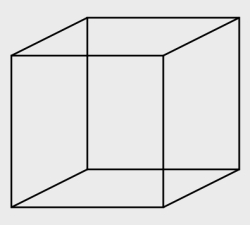The following is a composite portrait of a believer in charms or totems, gathered from studies of certain native peoples.
He seems to be psychologically continuous with an object [totem] of this sort, as if part of himself were actually contained in it, and in consequence this object has a peculiar fascination for him. It is filled with mana—that invisible secret power that produces in a man awe, attraction, and dread and so exerts an unconditioned influence over him. To him such an object is numinous…
…For it seems as if the object possesses something essential to him, so that interference with it by another is tantamount to interference with the very core of his being.
These quotes refer to an account which is now one hundred years old.* If there are racist undertones in what the account (elsewhere) terms “primitive” peoples, then they are in hindsight ironic, for replacing “object” with “concept of God” above yields a description not far from the modern Western religious person.
This leads nicely into Buddhist philosophy, which studies the mind’s inclination toward attachment to objects or concepts. So let us consider a religious person as one who has acquired an inordinate attachment to the God concept, much like the totemist in the quote above. Since I happen to be familiar with Christianity, suppose he is a Christian.
When he comes into fortune, he sees it as the blessings of God raining down upon him. When his enemies come into fortune, he remembers that God sends rain upon the just and unjust. When he experiences tragedy, he recalls his savior who underwent the ultimate tragedy so that mankind may reach the ultimate joy. When his enemies experience tragedy, he cites scripture saying that men reap what they sow.
His inner experiences are fused with the God concept in his mind, again like the totemist above. If you suggest to him that the Holy Spirit is only a concept, he knows you are wrong because he feels the Holy Spirit as an object of his experience. If you approach him with empirical facts which conflict with his religion, it’s obvious to him that you are wrong—it’s as if you are suggesting that three times three equals eleven. You are mistaken, and it’s only a matter of finding the flaw in your argument.
I suspect this is the main reason why dialogue between believers and non-believers is often forlorn. The non-believer thinks he is addressing some fine point of theology, while the believer sees it as a silly attempt to refute the obvious or, worse, as a personal attack aimed at invalidating his own experience. In a certain sense it’s just a misunderstanding.
For the true believer to be changed in any way, he must adopt a radically new dogma: “I can be mistaken”. The believer needs to decouple, to un-fuse, his inner experience from his conception of God. This is an intensely personal endeavor, for he has to consider (for example) whether it is possible that his feeling of the Holy Spirit is also felt by Hindus under different terminology. Nobody can take these steps for him. A mind is only changed through its own exertion.
All this applies equally to non-believers, of course, the only difference being the concept to which one is attached. As far as humanity goes, the most common attachment is to one’s self-image (or more simply, egotism). So next consider someone who has this attachment—one who is a “true believer” with regard to his own ego.
The corollary of his perspective is an unshakable dogma: “I am right.” If you challenge something he says, he interprets it as a personal attack. Why? Because what you say is obviously not true, and can only be an unseemly attempt to discredit him personally. The explanation for it can only be that you have a grudge against him. Therefore he must fight back using all possible measures (because that is what you are doing). Like all true believers, he is protecting the object of his attachment, that which he covets. Facts, evidence, and reality are not relevant factors.
Enlightenment, for any definition of the term, always results in taking oneself less seriously, not more. The outcome is always humor, not solemnity. This suggests a way out of the trap: first have a good laugh at yourself, then consider that you could be mistaken.
[*] Quotes are from The I and the Not-I by M. Esther Harding, referring to How Natives Think by Lucien Lévy-Bruhl (1910).

 This work is licensed under a
This work is licensed under a